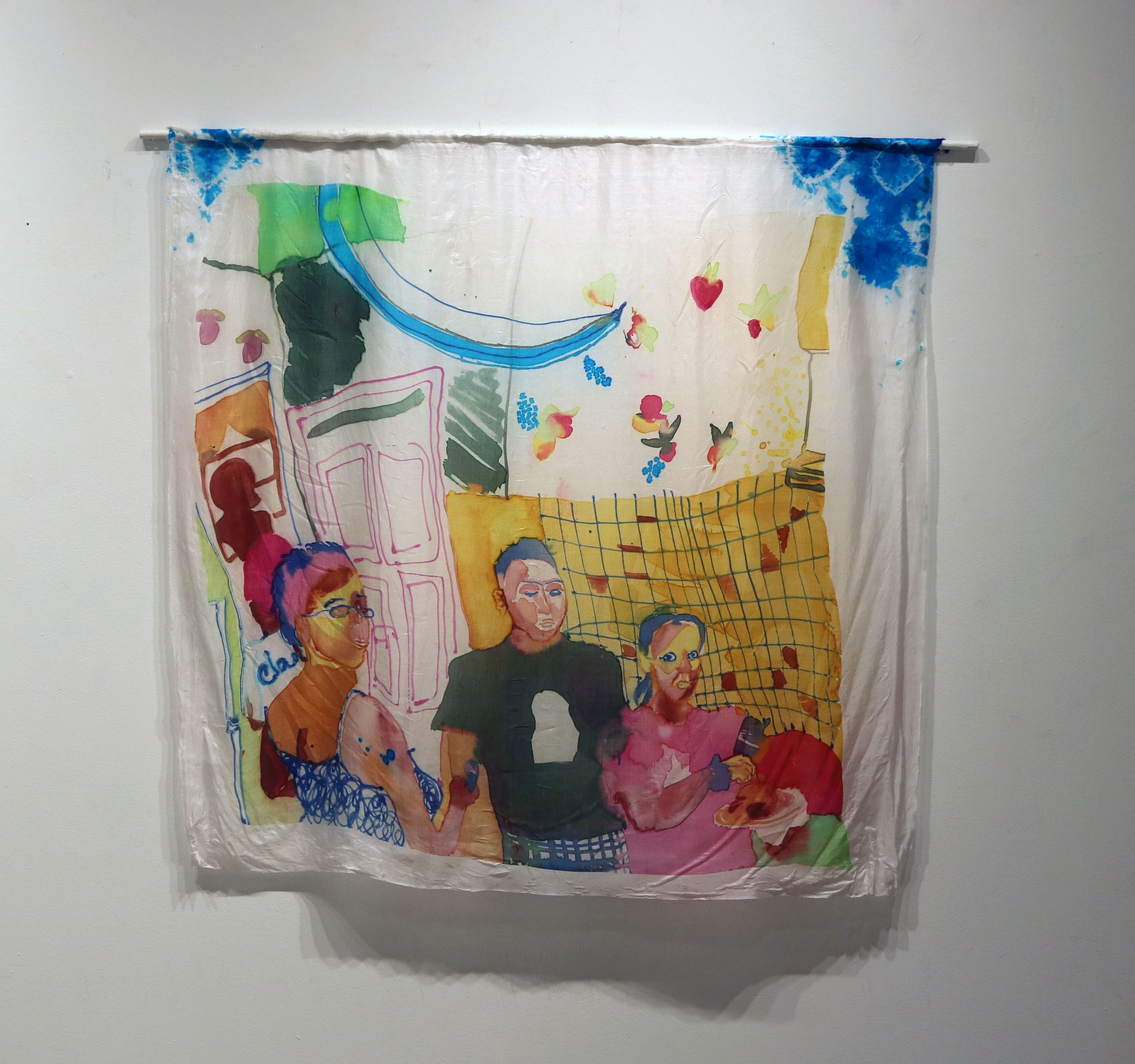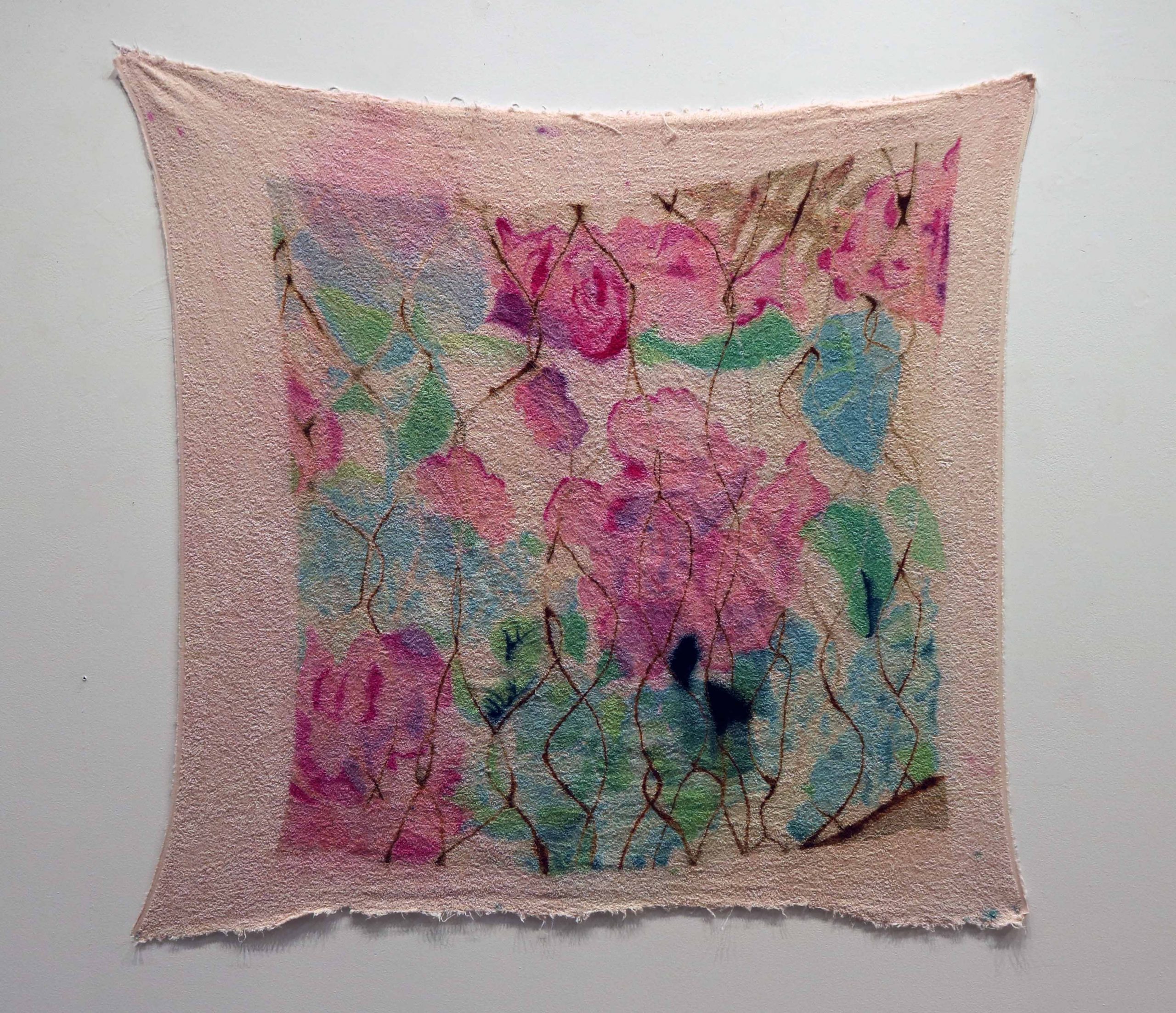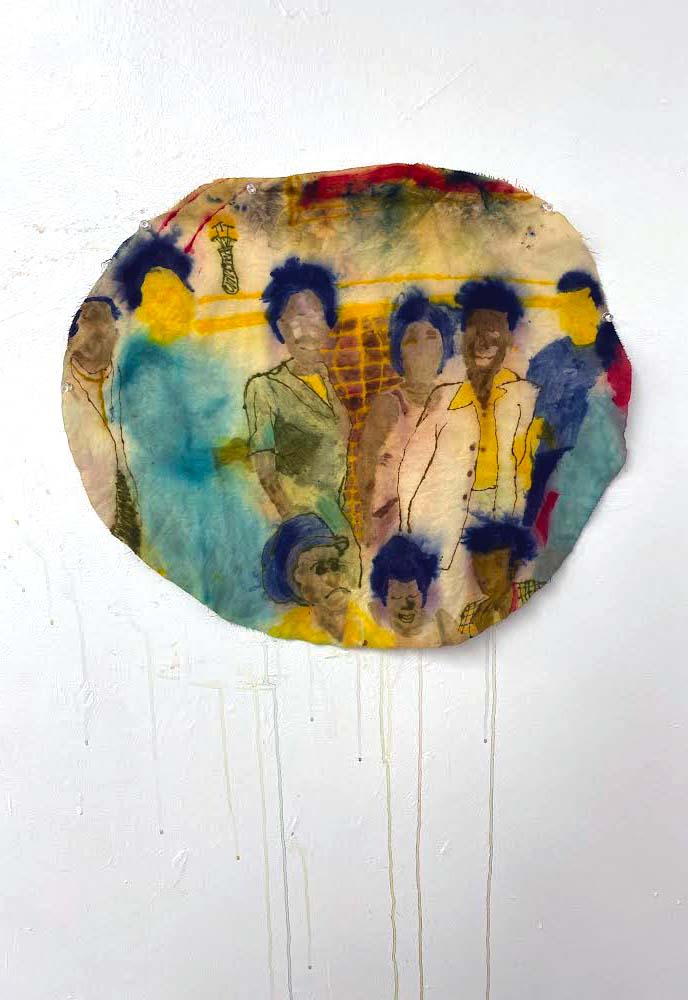Towards a Caress, 2017, Video, 2:00 mins.
“When, weary of dreaming, Olympia wakes, /Spring enters in the arms of a gentle black messenger, / it is the slave, like the amorous night / who comes to make the day bloom, delicious to see; /the august young girl in whom the fire burns.”
Is Laure in love? She offers Olympia a bouquet of flowers.
In another Manet, La Négresse, Laure appears. Her face is mawkish, a first image. Laure like vetiver: heavy, resinous.
Laure mainly mothers in Manet’s paintings. She’s Olympia’s mom. She’s everyone’s mom, as a Pan-Africanist might say. Laure doesn’t want to be everyone’s mom. She doesn’t want to birth the human race. Really she would like to wear a silver studded bangle and little else and go dancing. Laure would love the club, because you become one big body as the bass rattles the floor. There are no subjects in the club. Just one mass moving together. All music, thought Laure, is poetry divided by time.
Laure doesn’t want to be a mother. She imagines that being a mom is a double consciousness of sexless and sexy. She doesn’t think you can be both.
Laure knows people feel weird about their mothers. In their heads, she would rather be a soft, glinting piece of obsidian, in their mouths, anise. Laure would like to be tumbled, like a stone, in their minds. Each facet of the stone, people would rest the pads of their fingers on and feel a stickiness. They would draw their fingers back, discovering a latex secreted by the stone. They would remember there was a hole in everything.
Laure holds the flowers. Laure counts the flowers, the numbers akimbo. 1, peony, 2, carnation, 3, rose. Flower is the sweetest noun because it can be many at the same time. Her body becomes lax in reverie. Her limbs start to glitter as her blood travels throughout her body sluggishly, first the hands falling asleep, then the legs.
Laure’s hand clasps the bouquet. The contour of her arm is jagged. Her wrist emerges cartoonishly from the sleeve. This is a woman never imagined naked. Her nails don’t exist, just brown flesh mapping nailbeds. Spring is coming. It’s sunny outside. It will be dark later.
Laure can only hold flowers. Her gift is not her body, but the bright presence of soul in inchoate night eye. There has been much written about soul: songs, sociological treatises (Du Bois), religious texts, women, oranges, dissertations, poetry, names. Laure feels sad when she is reduced to a soul. There is no idealism to her philosophy: the body will live on and on to, as they say the soul will. If you reduce a people to soul, it’s easier to deny that they don’t exist.
There is nobody under Laure’s dress. There is nothing under Laure’s scarf. Manet is not an inventor; he works from life. In art, you can invent or copy. Muse knows no difference.
Laure has no story. She was never a girl. Laure has wants and desires that sit above the plane of her body, as lacquer is applied to wood.
Laure is a free black woman. How do you paint the underside of a coin? It’s unknown how she attained her status, but free blacks grew in number in Manet’s neighborhood. Knowing anything about history or even art, you would know that freedom is just as troublesome as sex. Slaves don’t make many appearances in paintings as models. That’s more of drawing’s territory. How do you paint a darkened movie theater, or the underside of a coin? In a letter to his mother and sister before he turns thirty, he describes the ‘negresses’ of Brazil as ‘hideous.’
Beauty is the most important thing to Laure. She would love to be as beautiful as the hottest day of the year. Manet writes in his notebook (I’m butchering the translation) — [noting her address] Laure, the very beautiful black woman. She will pose for him. When posing, the body articulates its athleticism in a type of patois. The body becomes sign.
Laure’s so beautiful to Manet, yet always clothed. When I look at Manet’s Laure, I’m not sure I can tell that he found her beautiful. His early depictions of her feel primordial, the flesh of her head never forming into a face, her limbs atomized like tree branches strewn on leaf-covered floor, drops of oil on the surface of water.
We can’t imagine Laure’s body. The flippancy of Manet’s rendering of her hand leads the viewer to ponder the afro-maternity of Modernism. What labor.
Laure is flying away from the canvas. Manet’s brushstrokes want to capture her in the darkness of the interior. But she has wings where her lips should be. She talks and her the minds of her interlocutors take flight. This is how she wins Manet. Her wings shudder against the clouds, carving them into hallucinated shapes.
Laure was born nowhere. She has dark brown skin, eyes rested on Olympia, relatively high cheekbones, and her bottom lip a muted red. In another painting, her bottom lip is so similar in tone to her skin that it easily recedes. Manet never paints her pouting. It’s early again.
Laure has children. The thing about being a slave: motherhood becomes a technology. Laure doesn’t know who her parents were. She was invented by Manet and any records showing her birth or death cease to matter. As soon as she appears to exist, she would have to be invented.
Laure has no name, at least in that painting. We don’t know if we’re meant to look at her. To consider this a portrait of Laure, humorously titled after the background character Olympia. I would like to name her something befitting her nature. Something like Summer Sand Gem, or Ripe Apple, or Turtle Keychain.
Laure is Olympia’s slave, the world’s oldest profession. Art historians theorize that they don’t know what’s going on between Laure and Olympia. Perhaps she is giving friendly advice, they say.
Can you tell Manet finds Laure beautiful? Look at the way he renders her. In his first painting with Laure, “Children in the Tuileries”, Laure is proto-mammy, scarf wrapped around her head, a pinkish dress that obscures the outline of her body. The shadows of her cheeks are flushed with black pigment. She is almost indistinguishable from the dark umber of the trees dotting the scene. In “Olympia”, it’s different. Her lip protrudes, her skin coheres as a warm, dark brown. She is smiling fondly.
Laure and Olympia are not together in the painting. Yes, they are there together in pictorial space. But their togetherness is questionable, as historical record reveals that they did not model for Manet at the same time. That is, when Victorine (the model for Olympia) was posing for Manet, Laure wasn’t there.
Laure is never there. Like she’s in the painting, but her presence is spectral. She watches people become women, waiting her turn, the 20th century a lash caught in her eye, sit-ins, free love and the May 68 riots. She is freak Aphrodite playing bambi in the woods. Laure’s never on time. It’s not about being punctual for Manet, its about being embodied. Every chakra a location.
Laure never appears in “Olympia”. She is just a voice actor.
I don’t think he lied. I see Laure as beautiful too. Just ageless.
Manet speaks for Laure. I want to hear her voice, how her tongue laps at consonants. I imagine when she laughs it feels like Abbey Lincoln singing forever.
I stare at “Olympia” and wonder why Laure’s hand never quite comes into focus. I want her to be there, with Olympia. Lending Olympia stockings or playing with Olympia’s hair. I want her to warn Olympia about one of her clients. Just do something.
The satirization of “Olympia” portrays Laure as full mammy, primarily in the form of cartoons abundantly decorating the pages of the French press. She is obese and desexualized in these depictions, racial anxiety subsequently animalizing her.
The cat: Laurie’s familiar.
I want to know the juice of Laure’s hair. I want her body to be my sequel. I want her to have a hot girl summer. I want whatever the 19th century version of acrylic nails are to stylize her fingers. I want Laure to want towards the end of the 19th century. I want the shape of her want to be contorted as if in sleep.
Laure may not even her name, just a password given to Manet. This is no Moynihan thesis, this is real life. The last name is the father’s first gift. We only know Laure on a first-name basis, and it’s this intimacy that reveals there is no sketch of her underneath layers of paint. It’s Spring again. Julius Caesar, elderberry jam, Persephone staying on my couch. It’s Spring again.



